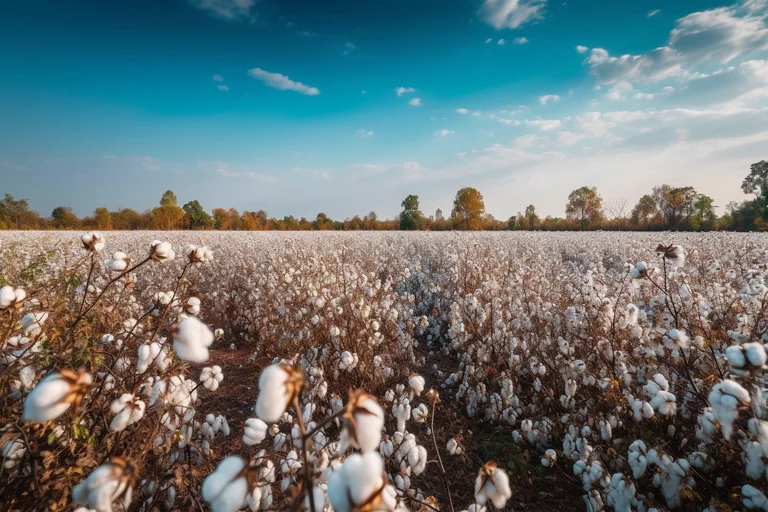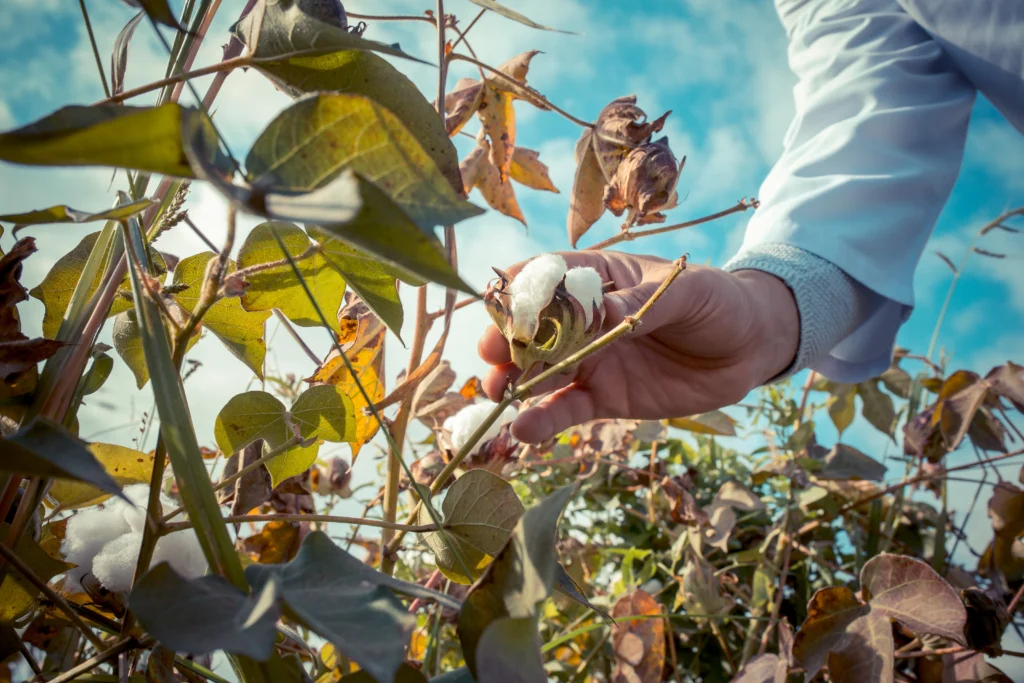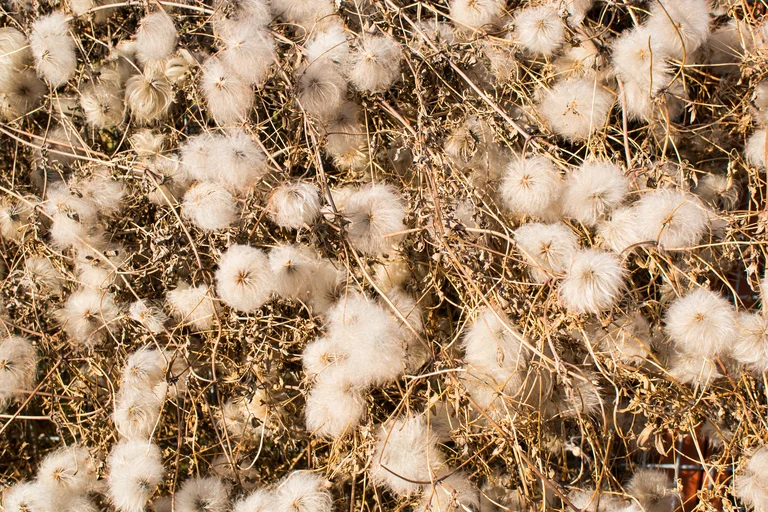
How Regenerative Organic Cotton Farming Improves Soil Health
Cotton is one of the most widely cultivated crops in the world, but traditional farming methods have had a significant impact on the environment. Farmers often depend on chemical fertilizers, pesticides, and heavy tilling, which gradually strip the soil of its natural nutrients. Today, regenerative organic cotton farming is leading a new wave of agricultural change—a movement that heals the land while growing one of the world’s most important crops.
This sustainable method not only grows eco-friendly cotton but also restores soil health, enhances biodiversity, and fights climate change. Let’s explore how cotton is being grown using regenerative organic farming and why it’s becoming an essential component of a healthier planet.
What Is Regenerative Organic Cotton Farming, and Why It Matter?
Regenerative organic cotton farming is a sustainable & holistic way of growing cotton that goes beyond basic organic methods. It focuses on restoring soil health, improving biodiversity, and supporting fair working conditions for farmers. Using techniques such as low-till or no-till farming, cover cropping, and crop rotation, this approach rebuilds soil organic matter, captures carbon, and reduces greenhouse gas emissions.
Unlike conventional cotton farming, which depends on chemicals, regenerative organic farming uses natural compost and eco-friendly practices that protect the environment. It’s not just about growing cotton—it’s about healing the land and creating a more sustainable future for both people and the planet. Regenerative organic cotton farming takes sustainable agriculture a step further by improving the ecosystem, not just growing.
Environmental Advantages of Regenerative Organic Cotton:

Sequestration of carbon:
Healthy soil captures carbon from the atmosphere, helping to lower greenhouse gas levels.
Biodiversity:
It encourages a more diverse farm ecosystem while protecting surrounding natural habitats.
Animal welfare:
It ensures that animals are treated humanely, prioritizing pasture-based systems whenever possible.
Social fairness:
It guarantees fair working conditions and a living wage for farmers, while offering the potential for extra income through biodiverse planting.
Zero synthetic chemicals:
Just like traditional organic farming, it avoids using persistent synthetic pesticides and fertilizers.
These methods improve the soil’s ability to breathe, retain water, & withstand droughts and floods. something traditional cotton farming often fails to achieve.
Why Soil Health Matters in Regenerative Organic Cotton Farming
Soil forms the foundation of life, and healthy soil grows healthy crops. In cotton farming, maintaining soil health is essential because it directly supports:
Water retention: Healthy soil holds more moisture, reducing irrigation needs.
Nutrient availability: Microbes in fertile soil make nutrients more accessible to plants.
Carbon storage: Organic matter in soil stores carbon, helping reduce greenhouse gas emissions.
Crop resilience: Healthy soils protect plants from pests and climate stress.
Unfortunately, soils in many areas have deteriorated as a result of decades of intensive cotton production. Natural nutrients have been replaced with synthetic fertilizers, & the fertility of the soil has decreased due to repeated tilling and soil compaction. Regenerative organic practices can help undo the harm in this situation.
According to the Rodale Institute, regenerative systems can significantly increase soil organic matter, enhance microbial activity, and improve long-term resilience against climate stress. In short, healthy soil isn’t just good for cotton—it’s the foundation of a sustainable farming future.
How Regenerative Organic Cotton Farming Restores Soil Health

1. Building Organic Matter and Microbial Life
Bacteria, fungi, and other microorganisms that naturally feed plants are abundant in healthy soil.
Regenerative farming enhances this by using compost, manure, and crop residues instead of synthetic fertilizers. These organic materials enrich the soil, increase its carbon content, and stimulate microbial growth—all of which improve fertility and structure.
2. Using Cover Crops for Continuous Soil Protection
Cover crops like legumes, clover, or grasses are grown between cotton seasons to protect the soil.
When they break down, they add nutrients, inhibit weed growth, and stop erosion. More importantly, they naturally fix nitrogen, reducing the need for external fertilizers and keeping the root system healthy all year long.
3. Reducing Tillage to Preserve Soil Structure
Regular tilling releases stored carbon into the atmosphere and breaks down soil aggregates.
To preserve soil structure, regenerative organic cotton farmers reduce or even eliminate tillage. By enhancing microbial habitats, root development, and water infiltration, this technique creates healthier, more balanced soils.
4. Crop Rotation and Diversity
Rotating cotton with crops like legumes, grains, or vegetables restores nutrient balance and prevents pest buildup. This diversity mirrors natural ecosystems, enhances nutrient cycling, and helps the soil regenerate between cotton harvests.
5. Compost and Natural Fertilizers
Regenerative farmers use green manure, compost, and biochar instead of chemical fertilizers that harm soil microbes. These natural amendments gradually and sustainably increase nutrient levels while also enhancing soil texture and moisture retention.
How Farmers and Communities Benefit from Regenerative Organic Cotton Farming
Regenerative organic cotton farming isn’t just good for the planet—it’s also good for people.
Farmers save money on chemical inputs, improve long-term yields, and gain access to the growing market for sustainable cotton.
Moreover, customers are favoring companies that make investments in environmental responsibility by purchasing apparel made from regenerative organic cotton.
Regenerative cotton programs are providing small farmers in nations like India, the United States, and Turkey with improved soil management, equitable compensation, and a cleaner future.
Regenerative agriculture problems & challenges
Transition period: When farmers switch from conventional to regenerative organic cotton, they may see yields drop at first and face some risks before the benefits fully appear. Rebuilding the soil and restoring its health takes time, but the long-term rewards are worth the effort.
Certification & traceability: Standards for labeling cotton as “regenerative organic” are still evolving. For instance, the Regenerative Cotton Standard (RCS) works to ensure healthy soil, thriving ecosystems, and fair livelihoods for farmers.
Scale & supply-chain complexity: It’s one thing to have pilot farms; scaling to large acreage and integrating with textile supply chains adds complexity.
Knowledge & training: Farmers need technical support, monitoring, and often new tools and understanding (for cover crops, soil biology, etc).
Avoiding greenwashing: Simply labeling cotton as “regenerative” doesn’t guarantee that all practices are properly followed or verified. Brands and consumers need to demand transparency to ensure the claims are real.
Regenerative organic cotton farming is reshaping how we grow cotton by rebuilding the soil beneath it. Through minimal soil disturbance, cover cropping, crop rotation, and avoiding chemical inputs, farmers restore fertility, boost biodiversity, and make their land more climate-resilient. As awareness grows, this farming model offers a clear path toward healthier soils and a sustainable cotton future.
Read more related articles> https://www.climatechallange.com/urban-farming-a-growing-trend-in-malmo-and-beyond/
FAQS
Q1: How does cover cropping improve soil health in cotton fields?
Ans. Cover crops—such as legumes or grasses planted between cotton seasons—protect the soil surface, suppress weeds, increase biomass that becomes organic matter, improve water infiltration, and feed soil microbes. These benefits build the soil ecosystem and reduce erosion.
Q2. What is the difference between organic and regenerative organic?
Ans. While organic farming can still rely on tillage methods that disturb the soil, regenerative agriculture takes a different approach. By using practices like cover cropping, rotational grazing, and no-till farming, it actively improves soil fertility, boosts biodiversity, and captures carbon from the atmosphere.
Q3. Why is regenerative cotton better for the environment?
Q4. Can all farmers shift to regenerative organic cotton farming?
Ans. Consumers can choose textile brands that clearly source regenerative organic cotton, check for certifications like the Regenerative Cotton Standard, and prioritize products with transparent supply chains. As demand grows, more farmers will adopt these sustainable practices.